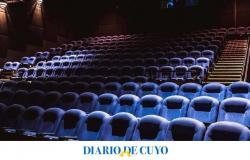The 86th anniversary of the Office of the Historian of the City of Havana will be remembered this Tuesday with the conference “News on the conservation of documentary heritage in Cuba”, by Dr. Sofía Borrego Alonso.
At the meeting, which will take place in the Multipurpose Room of the City Museum, the head of the Laboratory for Preventive Conservation of Documentary Heritage in the National Archive of the Republic of Cuba will address, among other aspects, the general elements on the preservation of documents on any support.
Its guidelines take into account the particular demands imposed by the specific conditions of Cuba, the agency specified. Latin Press.
Origin of an office
The 1st July 1935, Dr. Emilio Roig de Leuchsenring (1889-1964) was appointed Historian of the City of Havana by Municipal Mayor Dr. Guillermo Belt Ramírez.
Three years later, the Office of the City Historian was created on June 11, 1938 by Mayor Dr. Antonio Beruff Mendieta as an autonomous municipal body.
The antecedents date back to 1927, when Dr. Roig held the position of Intermunicipal Commissioner of Havana, to which he had been appointed on May 3 by Mayor Dr. Miguel Mariano Gómez y Arias.
According to the magazine Opus HavanaAfter being laid off during the Machado dictatorship, once it was overthrown, the intellectual was reinstated on November 22, 1933 in that role until his appointment as Historian of the City of Havana.
The departments that made up the Office of the City Historian from the beginning were the Havana Municipal Historical Archive, the Francisco González del Valle Cuban and American Historical Library and the Municipal Museum of the City of Havana.
In its first years, it was located in the Municipal Palace, until it moved in 1947—now forming part of the Department of Education—to the Lombillo Palace, in the Plaza de la Catedral.
It was through that institution that Roig’s work achieved a new projection, with the publication of numerous books and articles on Havana history and Cuba’s struggles for its independence, the holding of book fairs and the tribute to national and cultural personalities. foreigners.
The Office dedicated important efforts to the conservation of places of heritage value and intervened in the regulation of street names, the recognition of sites of historical value, the rescue of José Martí’s birthplace and the recovery of various Havana traditions. , highlighted the agency Latin Press.

Loyal, continuator and architect of conservation and progress
Since 1968, Eusebio Leal (1942-2020) was appointed director of the City Museum and the Historian’s Office, from where he multiplied the work of his predecessor.
Fourteen years later, Dr. Leal Spengler managed to place Havana on the world map of cities with preserved colonial areas that have been included by UNESCO in the list of World Heritage of Humanity.
His work at the head of the Office, until his death, which occurred in July 2020, rehabilitated, through a master plan, numerous heritage properties that gave architectural and landscape luster to the capital, from the 18th to the 20th century, while conceiving programs of community and tourist resuscitation with great social, cultural and economic impact.








